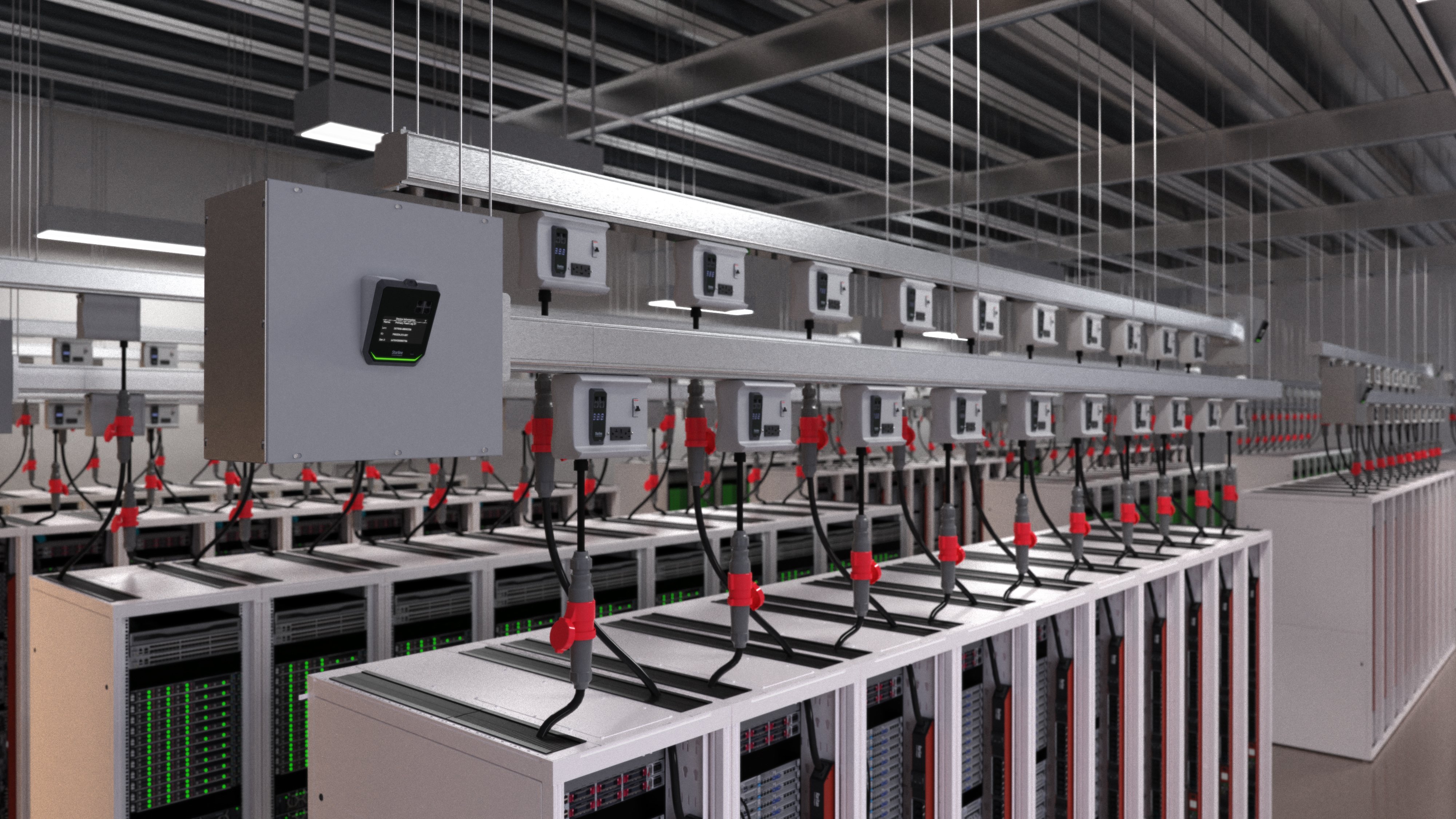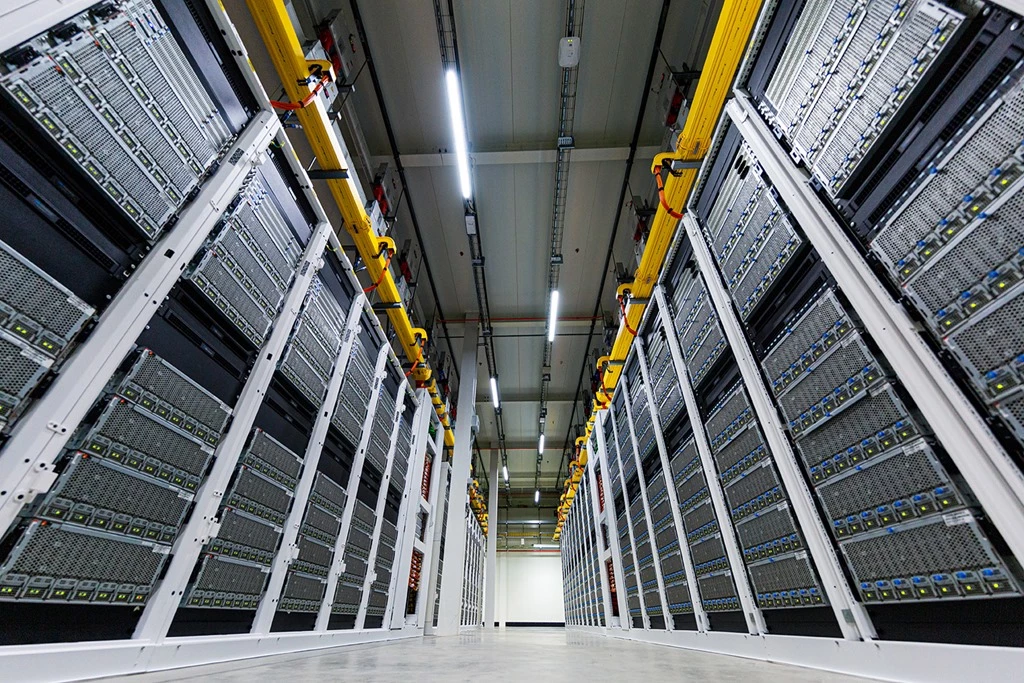Introduction
Differentiate between enterprise, hyperscale, colocation, and edge data centers. Each serves specific functions, such as hyperscale data centers focused on handling enormous amounts of data for cloud providers, while colocation centers serve multiple businesses with shared infrastructure.
Primary Business Objectives:
Depending on the organization’s industry (e.g., finance, healthcare, or technology), data center objectives can vary significantly. Financial sectors may prioritize low latency, while tech companies might emphasize scalability.
Capacity and Flexibility Needs:
Outline the necessity of scaling for future growth in data processing and storage, and explain how emerging technologies (like edge computing and AI) are shaping modern data center design.
Strategic Site Selection
Site selection has expanded beyond location to also consider factors like sustainability, infrastructure, and connectivity:
- Proximity to Fiber and Connectivity Options: The chosen site should have access to multiple internet service providers (ISPs) and fiber-optic networks for redundancy and low latency.
- Green Power Accessibility: Many organizations prioritize access to renewable energy sources. For instance, selecting a location close to wind or solar farms can offset power demands.
- Environmental Regulations and Permits: Understanding local laws and environmental policies (e.g., waste management and emissions) is crucial for long-term compliance and maintaining operational continuity.
Also Read: Why ‘Remote Hands’ Data Centers in Rome are the Future of IT Management
Key Elements in Data Center Design
Tier Classification and Standards
Data center design adheres to established standards to ensure uptime and reliability:
- Detailed Tier Standards: Explain the Uptime (not downtime) Institute’s tier system in depth, including the requirements for power and cooling redundancy and examples of the estimated downtime associated with each tier.
- Adherence to Industry Standards: Describe standards such as ANSI/BICSI 002-2019 and TIA-942 for data center design, which outline best practices for everything from security protocols to telecommunications infrastructure.
Space Optimization and Layout Design
Efficient layout design can significantly impact the operational effectiveness and flexibility of a data center:
- Hot/Cold Aisle Containment: Use hot and cold aisle configurations to optimize cooling and energy efficiency by preventing hot air from recirculating into equipment intake.
- Rack Density and Spacing: Higher rack density reduces the physical footprint but increases cooling requirements. Evaluate whether a high-density or low-density configuration best meets the organization’s operational goals.
- Accessibility for Maintenance: The design should ensure easy access for maintenance tasks without disrupting other areas.

4. Core Infrastructure: Power Systems
Reliable and redundant power infrastructure is the backbone of data center uptime.
Primary Power and Redundancy
Discuss redundancy configurations to increase data center reliability:
- N+1, 2N, and 2N+1 Redundancy Models: These models offer different levels of redundancy, where N+1 adds a backup for every essential component, and 2N+1 includes multiple backups for even higher availability.
- Generator and Fuel Logistics: In high-risk areas prone to natural disasters, data centers must have enough fuel reserves and access to emergency supplies to sustain operations during prolonged outages.
Backup Systems and Uninterruptible Power Supply (UPS)
High-performance UPS systems are critical for short-term power supply during transitions:
- UPS Configurations: Explore modular UPS systems for flexibility and scalability as power demands grow.
- Battery Technology: Innovations in lithium-ion and flywheel-based systems provide longer battery life and faster response times compared to traditional lead-acid batteries.
5. Cooling Systems and Environmental Control
Cooling systems are essential to prevent overheating and maintain stable conditions for data center equipment.
Air vs. Liquid Cooling Systems
- Liquid Cooling: Direct-to-chip liquid cooling allows for high-efficiency heat removal from the CPU and GPU components. Discuss the feasibility, costs, and maintenance involved with liquid cooling.
- Energy-Efficient Air Cooling: Discuss advanced air-cooling techniques, like adiabatic cooling and free cooling, which use outside air to reduce energy consumption when outdoor temperatures are cool enough.
Hot and Cold Aisle Configurations
Optimal aisle configuration helps prevent hot air recirculation:
- Containment Strategies: Using physical barriers to fully isolate hot or cold aisles can maximize cooling efficiency. Outline the benefits and challenges of containment in maintaining optimal airflow.
Also Read: Rack and Stack Services: Harnessing the Full Potential of Rack and Stack Services | Reboot Monkey

6. Network Infrastructure Design
Networking is crucial for ensuring fast, secure, and reliable data transmission:
- Network Topologies: Compare traditional three-tier architectures with spine-and-leaf configurations, which offer lower latency and more redundancy.
- Software-Defined Networking (SDN): SDN enhances control over network traffic and simplifies data center management, especially in multi-tenant and cloud environments.
7. Advanced Data Center Security Measures
A holistic approach to security ensures both physical and digital data protection:
Physical Security
- Perimeter and Access Control: Security measures, such as perimeter fencing, security guards, and biometric access systems, create multiple layers of defense.
- Smart Surveillance: AI-driven surveillance can monitor live feeds and detect unusual behavior, sending real-time alerts to security teams.
Cybersecurity Essentials
Effective cybersecurity protocols are essential for data centers hosting sensitive information:
- Zero-Trust Architecture: This security model requires verification for each person or device attempting to access the network, minimizing insider threats.
- Regular Security Patching and Monitoring: Data centers need dedicated IT security teams to continuously monitor and patch vulnerabilities.
8. Sustainability and Energy Efficiency
Modern data centers prioritize sustainability to reduce environmental impact:
Renewable Energy Integration
Many data centers are investing in renewable energy partnerships:
- Power Purchase Agreements (PPAs): Data centers can enter PPAs with renewable energy providers to directly support their power needs.
- On-Site Solar and Wind Installations: Discuss the feasibility and benefits of on-site renewable energy generation, which can reduce reliance on grid power.
Advanced Cooling Systems
Cooling systems can represent over 30% of a data center’s energy use. Implementing advanced cooling strategies is crucial:
- Free Cooling: Use ambient air or water sources to reduce cooling costs and carbon emissions.
- Waste Heat Reuse: Some facilities repurpose waste heat for nearby buildings, showcasing a commitment to sustainable practices.
9. Project Management and Regulatory Compliance
Effective project management and compliance are essential for data center completion on time and within budget:
- Workflow and Timeline Development: Break down each project phase from site selection and construction to equipment installation and testing.
- Regulatory Adherence: Compliance with data center regulations (such as GDPR and HIPAA) ensures the facility meets required security and privacy standards, especially for industries like healthcare and finance.
10. Future-Proofing Your Data Center
Designing for flexibility allows for easier adaptation to emerging technologies and changing market demands:
Building for Scalability and Flexibility
- Modular Infrastructure: Modular data center components, such as power and cooling modules, enable rapid scaling without major reconstruction.
- Edge Computing Readiness: As edge computing grows, data centers should prepare for potential integrations by deploying edge nodes close to end users for low-latency processing.
Adopting Emerging Technologies
Integrating cutting-edge technologies prepares data centers for future advancements:
- AI and Automation: AI can optimize data center operations, from predictive maintenance to workload distribution, increasing overall efficiency.
- 5G Compatibility: As 5G networks expand, data centers can leverage low-latency connections to support IoT applications and real-time data processing.
Also Read: Colocation Data Center vs. Cloud – Which is Right for Your Business in the USA?
Top 9 Mistakes in Data Center Design & Planning
Inadequate Power and Cooling Capacity
Underestimating power and cooling needs can lead to overheating, equipment failures, and increased costs. Planning for peak loads and growth is crucial to ensure reliability and scalability.
Poor Site Selection
Failing to consider location factors like natural disaster risks, accessibility to renewable power, and network connectivity can increase operational risks and costs. Selecting a site aligned with business continuity and sustainability goals is essential.
Lack of Redundancy
Insufficient backup power and cooling systems lead to higher risks of downtime. A well-planned redundancy, like N+1 or 2N, ensures the data center can handle failures without affecting operations.
Overlooking Scalability
Designing without future growth in mind limits flexibility. Planning for modular growth allows data centers to expand seamlessly as needs increase, saving costs on major renovations.
Improper Cable Management
Poor cable organization can restrict airflow and make maintenance difficult. Using structured cabling with proper labeling and routing supports easy access and efficient cooling.
Ignoring Security Requirements
Physical and cybersecurity measures must be integrated early in the design process. Without multi-layered security, data centers are vulnerable to breaches, risking sensitive data and reputation.
Failure to Follow Industry Standards
Ignoring standards like TIA-942 or Uptime Institute’s tier levels can lead to regulatory issues and impact reliability. Adhering to these standards promotes operational consistency and resilience.
Insufficient Monitoring Systems
Lack of proper monitoring hinders visibility into critical operations, increasing the chance of unanticipated issues. Implementing robust monitoring for power, temperature, and security enables proactive management.
Neglecting Energy Efficiency
Overlooking energy-efficient technologies and designs results in higher operational costs. Using modern cooling techniques, efficient hardware, and renewable energy sources can reduce both costs and environmental impact.
Avoiding these common pitfalls can ensure a well-designed, scalable, and reliable data center setup, supporting long-term efficiency and security.
Conclusion: Building a Future-Ready Data Center
Building a robust, efficient, and sustainable data center requires careful planning and execution. From power systems to advanced security measures, each component must align with operational goals and industry standards.
By future-proofing and optimizing energy use, data centers can achieve high reliability while reducing environmental impact.
For those looking to streamline the process, Reboot Monkey offers specialized data center design and build services.
